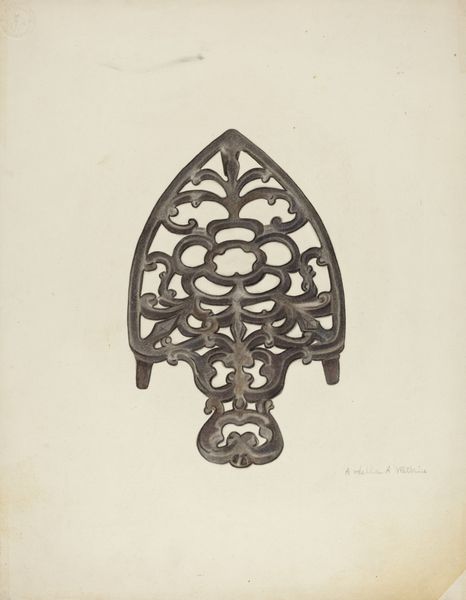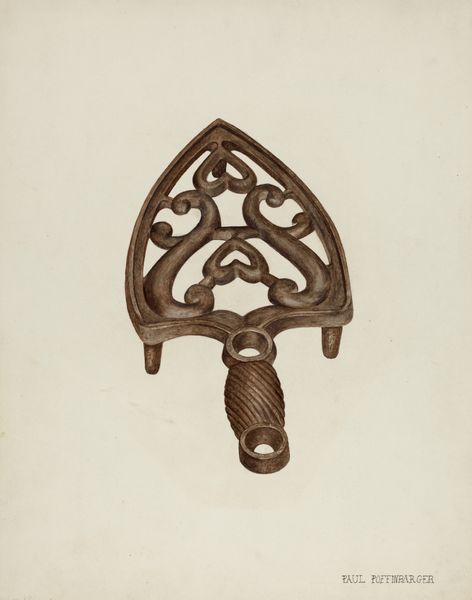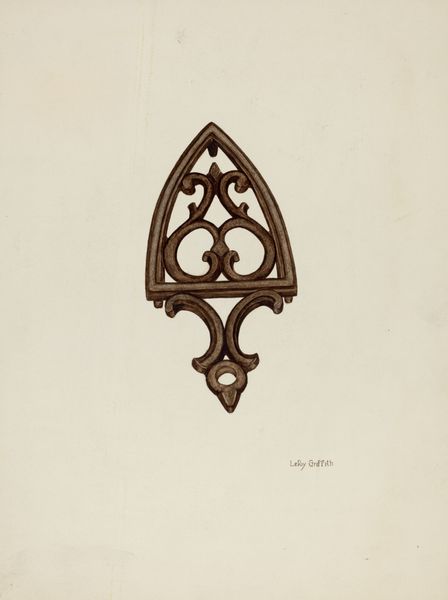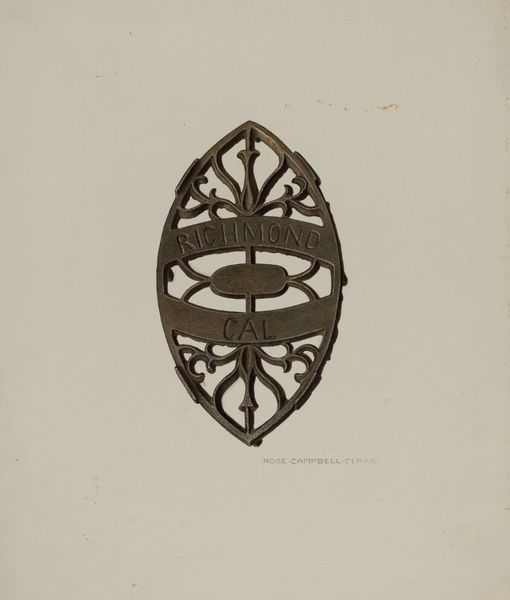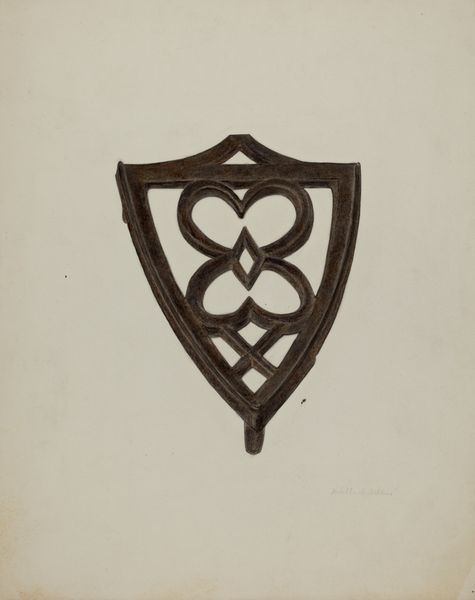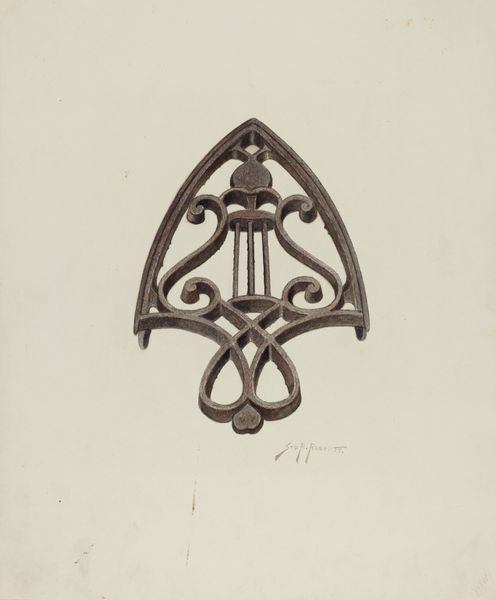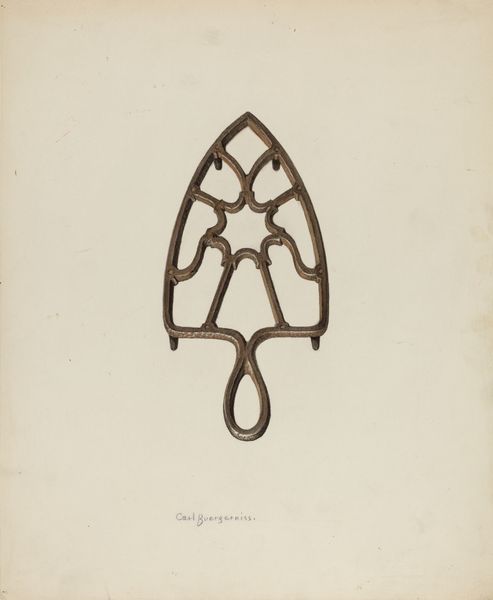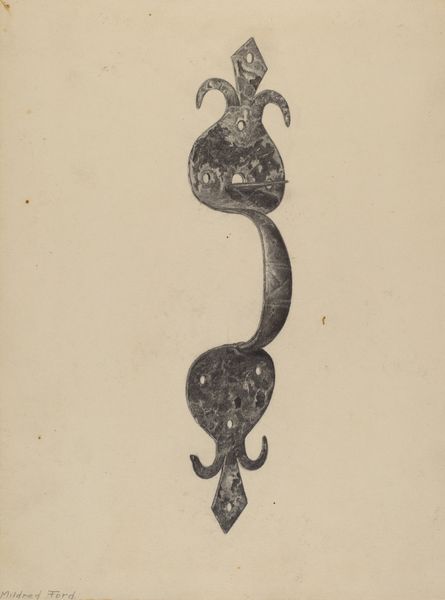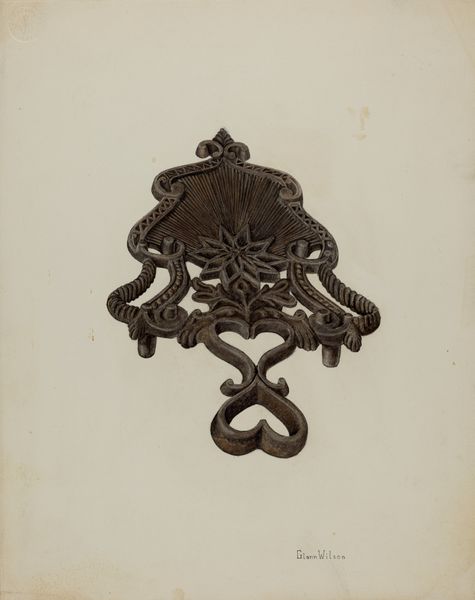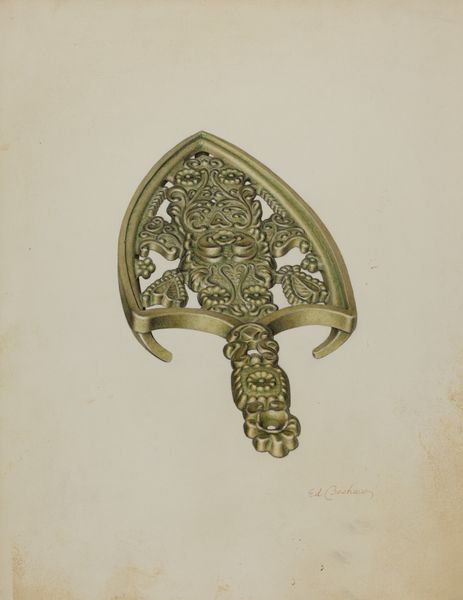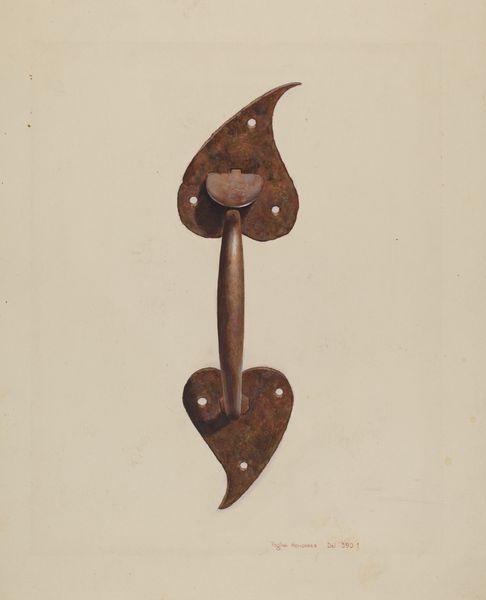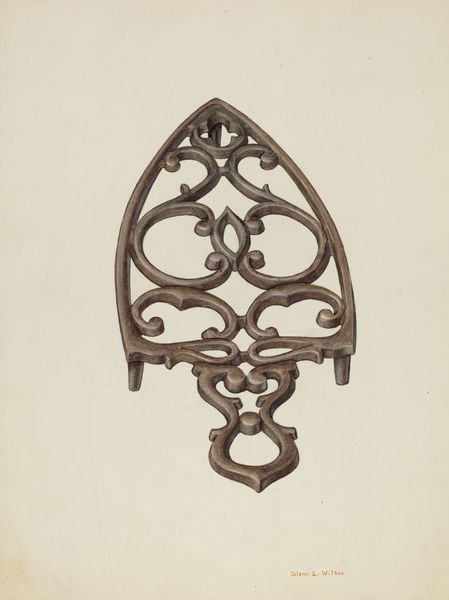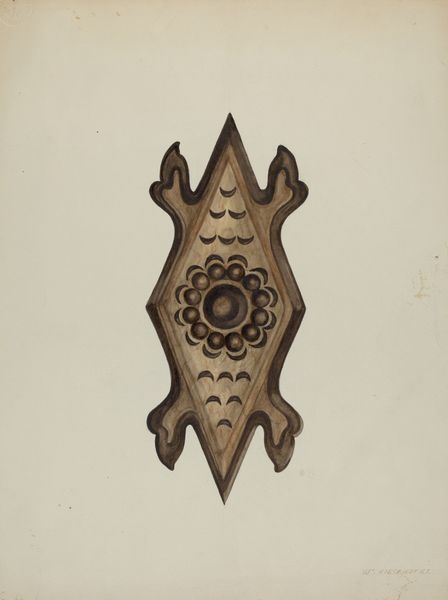
drawing, pencil
#
drawing
#
pencil
Dimensions: overall: 35.7 x 29 cm (14 1/16 x 11 7/16 in.)
Copyright: National Gallery of Art: CC0 1.0
Curator: So, we’re looking at “Trivet,” a pencil drawing by Sydney Roberts, dating back to around 1942. My initial thought: a sturdy, utilitarian object rendered with surprising delicacy. What jumps out at you? Editor: An austere monument! At first glance, it's heavy and static, almost funereal. But then you notice how the braided, curling details give it an energy, like contained fire. Curator: Contained fire – I love that. Roberts seems interested in elevating the everyday. The choice of pencil as a medium feels deliberate, highlighting form and texture with such humble materials. What could that reveal about how utilitarian objects have been framed in society? Editor: That's astute! We’re living through World War II. Resources are being used for the war effort, it’s a commentary. Domesticity gets romanticized, especially if it involves a drawing of something that could be cast-off. Roberts seems to imbue it with a sense of permanence. The detail lavished upon it invites a new perspective of value. It seems like a defiant act of cherishing small comforts, turning a common kitchen item into something precious. Curator: Yes! It feels charged with significance now. Considering it was created during wartime, the trivet, usually relegated to the kitchen, takes on a whole new symbolic weight. Maybe this reflects the period where mass culture started elevating ordinary household objects. I'm wondering, too, about the absence of color – does that contribute to this sense of monumentality you picked up on? Editor: Absolutely. It underscores that functional essence while simultaneously, paradoxically, detaching the trivet from its functionality! It makes us consider form rather than immediate practicality. The muted tones draw attention to the subtle artistry embedded in the object's design, the twists, the slight imperfections of the drawing. It’s about acknowledging the simple beauty and resilience of things we often overlook, isn't it? Curator: It truly is. A silent, humble tribute that resonates so powerfully, even today. I like how that silence also adds to that static feeling you started with. Editor: Exactly. It whispers a story of understated strength. Makes you think twice about taking little things for granted, right?
Comments
No comments
Be the first to comment and join the conversation on the ultimate creative platform.
